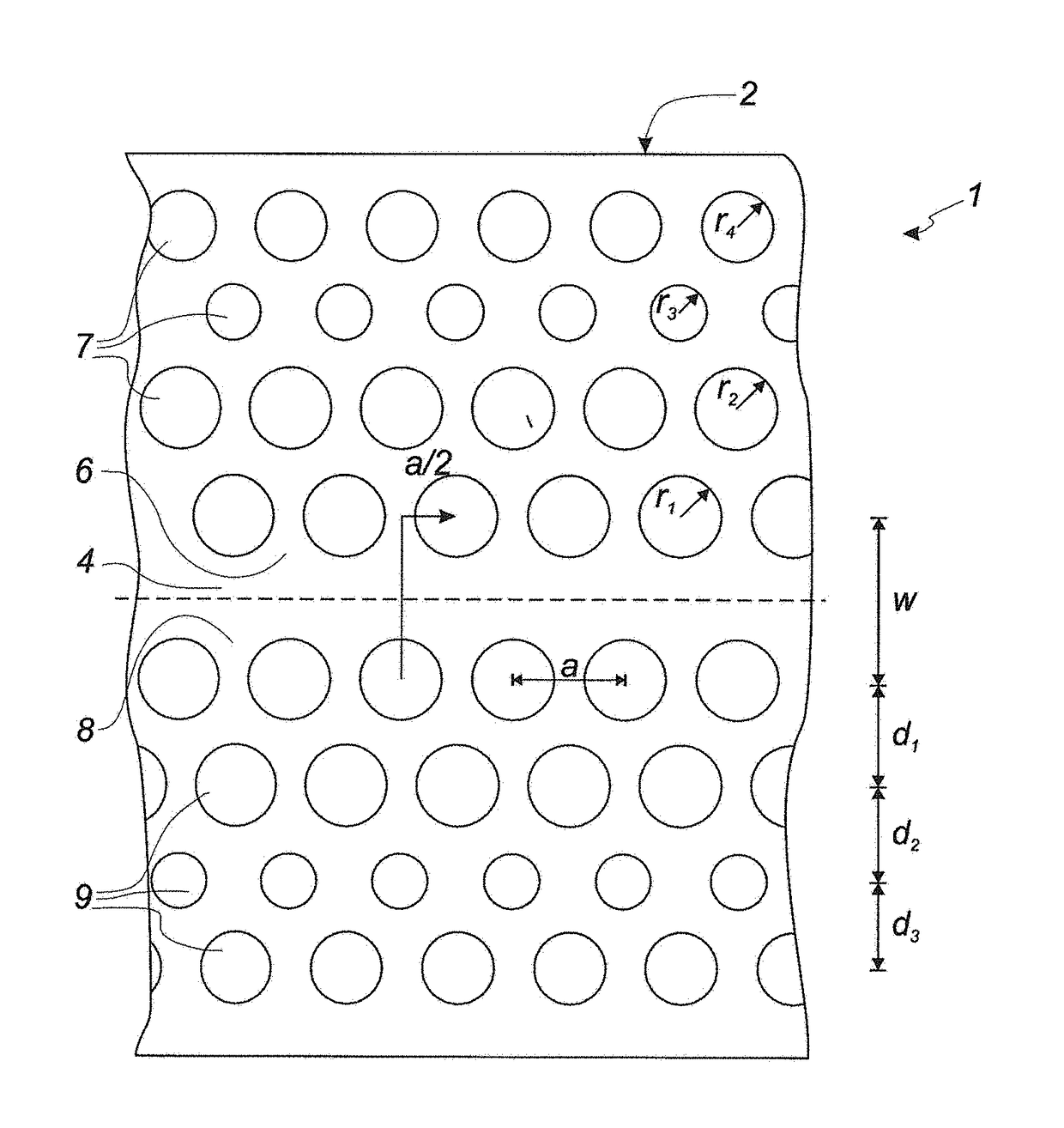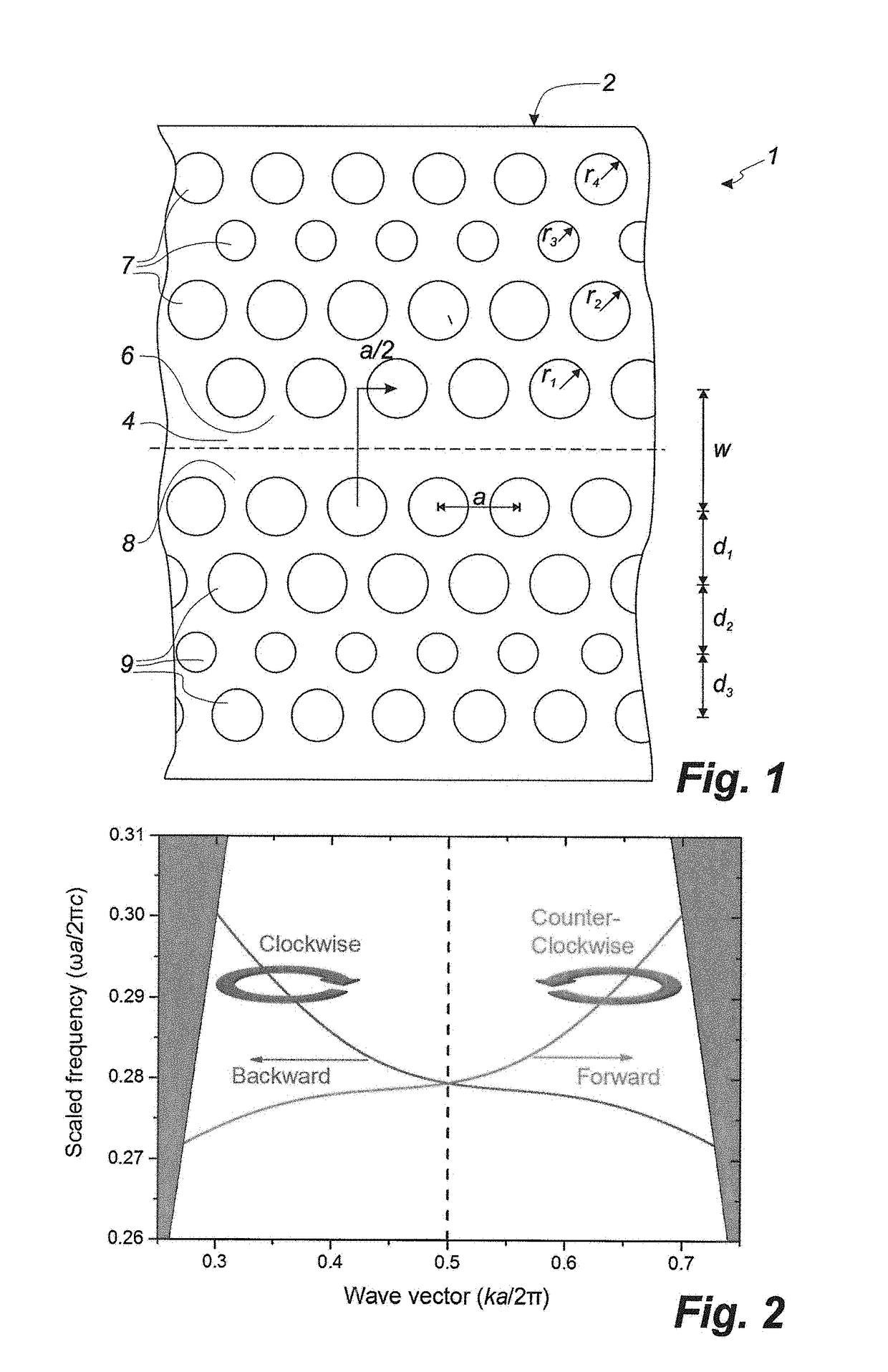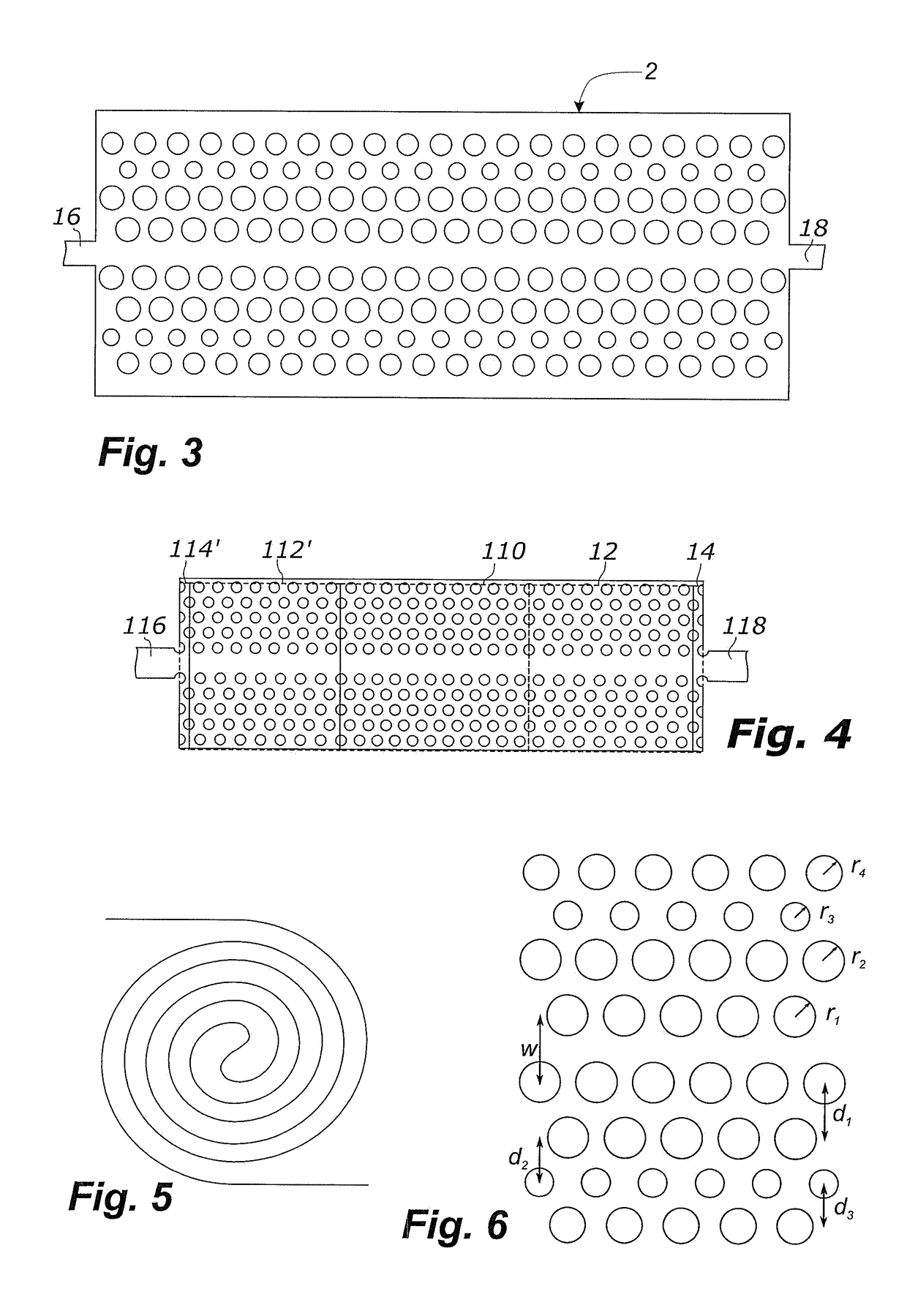A slow-light generating optical device and a method of producing slow light with low losses
- Summary
- Abstract
- Description
- Claims
- Application Information
AI Technical Summary
Benefits of technology
Problems solved by technology
Method used
Image
Examples
example i
[0085]In the first example, shown in FIG. 6, the planar waveguide is designed with circular holes. The radii of the holes in the first to fourth rows are r1=0.35a, r2=0.35a, r3=0.24a, and r4=0.30a, respectively. The width of the guiding region is w=(0.75√3) a. The distances between adjacent rows are d1=(1.25√3 / 2) a, d2=(0.95√3 / 2) a, and d3=(0.90√3 / 2) a, respectively. The planar waveguide is designed as a membrane having a thickness of 2a / 3. The waveguide exhibits a dispersion curve as shown in FIG. 2.
[0086]The shown planar waveguide is adapted to guide light with a group index, ng, of 39 at the Dirac point. The experiments showed no Anderson localization occurs over a propagation distance of at least 300 micrometres.
example ii
[0087]In the second example, shown in FIG. 7, the planar waveguide is designed with square holes. The sides of the holes in the first to fourth rows have a side length of l1=0.62a, l2=0.62a, l3=0.43a, and l1=0.53a, respectively. The width of the guiding region is w=(0.75√3) a. The distances between adjacent rows are d1=(1.25√3 / 2) a, d2=(0.95√3 / 2) a, and d3=(0.90√3 / 2) a, respectively. The planar waveguide is designed as a membrane having a thickness of 2a / 3. The planar waveguide exhibits a dispersion curve as shown to the right in FIG. 7, where the energy bands of forward propagating mode and the backward propagating are substantially mirror symmetric about the Dirac point.
[0088]The shown planar waveguide is adapted to guide light with a group index, ng, of 42 at the Dirac point.
example iii
[0089]In the third example, shown in FIG. 8, the planar waveguide is designed with holes formed as equilateral triangles with one side facing towards the guiding region and an apex pointing away from the guiding region. The sides of the holes in the first to fourth rows have a side length of l1=0.9a, l2=0.74a, l3=0.81a, and l1=0.75a, respectively. The width of the guiding region is w=(0.91√3) a. The distances between adjacent rows are d1=(1.2√3 / 2) a, d2=(1.1√3 / 2) a, and d3=(0.78√3 / 2) a, respectively. The planar waveguide is designed as a membrane having a thickness of 2a / 3. The planar waveguide exhibits a dispersion curve as shown to the right in FIG. 8, where the energy bands of forward propagating mode and the backward propagating are substantially mirror symmetric about the Dirac point.
[0090]The shown planar waveguide is adapted to guide light with a group index, ng, of 50 at the Dirac point.
[0091]While the invention in the previous embodiments has been described for designs with...
PUM
 Login to View More
Login to View More Abstract
Description
Claims
Application Information
 Login to View More
Login to View More - R&D
- Intellectual Property
- Life Sciences
- Materials
- Tech Scout
- Unparalleled Data Quality
- Higher Quality Content
- 60% Fewer Hallucinations
Browse by: Latest US Patents, China's latest patents, Technical Efficacy Thesaurus, Application Domain, Technology Topic, Popular Technical Reports.
© 2025 PatSnap. All rights reserved.Legal|Privacy policy|Modern Slavery Act Transparency Statement|Sitemap|About US| Contact US: help@patsnap.com



